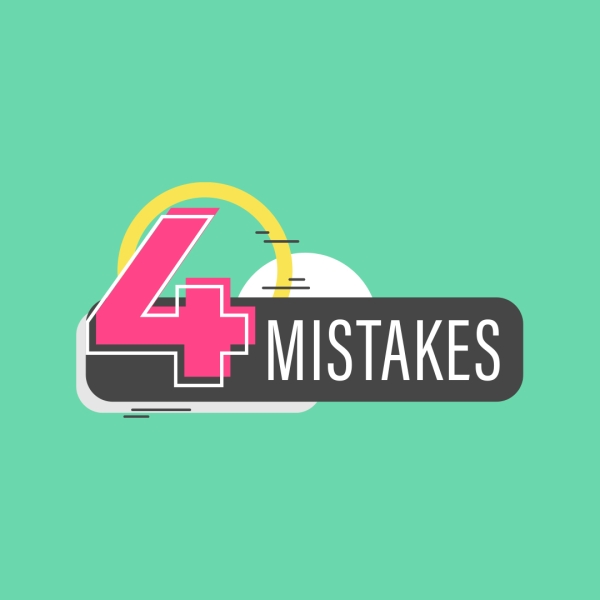In recent years, the publishing industry has undergone a revolutionary transformation, ushering in an era where authors have more control over their literary journeys than ever before.
The advent of self-publishing has democratized the entire process of bringing a book to market, breaking down the barriers that once stood between a writer and their potential audience.
This seismic shift has not only empowered authors but has also expanded the literary world with an influx of diverse and previously unheard voices.
How to self publish a book? This article serves as a comprehensive guide to navigating the exciting, yet intricate, world of self-publishing. Whether you are a budding novelist looking to self publish, a self-publishing company, a seasoned writer seeking more autonomy, or a hobbyist looking to share your work with others, understanding the nuances of self-publishing is essential for success.
From the initial steps of preparing your manuscript to the complexities of marketing and beyond, this guide aims to equip you with the knowledge and tools necessary to transform your manuscript into a published book, allowing you to join the ranks of other self published authors, without the need for a traditional publisher.
Self publishers are offered an unparalleled level of creative freedom and potential for personal fulfillment. But it also demands a unique blend of creativity, business acumen, and perseverance.
This guide will delve into the essential phases for those looking to self publish, demystifying the journey and providing you with practical advice to achieve your publishing goals.
By understanding the intricacies of what it takes to self publish, you can make informed decisions, strategically navigate the market, and ultimately, achieve self-publishing success.
In the following sections, we will explore everything you need to know to self publish, from the nuances of manuscript preparation and the step-by-step details of the publishing process, to the intricacies of marketing and the specifics of platforms like Kindle Direct Publishing.
Prepare to embark on a journey to self publish your book that could not only realize your dream of becoming a published author but also open doors to opportunities beyond the book.
Start Your Publishing Journey FOR FREEThe Definition and Evolution of Self-Publishing
To self publish means to publish a book independently, without the involvement of a traditional publishing house. This mode of publishing has a rich history, tracing back to when authors had to bear the cost and responsibility of printing their works.
With the digital revolution, the self-publishing industry has evolved significantly. The advent of the internet, print-on-demand technology, and e-book platforms has dramatically lowered the barriers to entry, allowing more authors to self publish their work easily and affordably.
In the past, self-publishing was often viewed as a last resort for authors unable to secure traditional deals. However, this perception has shifted over the years. Nowadays, there are many successful self published authors.
Today, self-publishing is a legitimate and often preferred choice for many writers, recognized for its ability to offer greater creative control, faster time to market, and potentially higher royalties.
Advantages of Self-Publishing of Self-Publishing Versus Traditional Publishing
Creative Control
One of the most significant advantages of self-publishing is the level of creative control it offers to authors. Unlike traditional publishing, where editorial decisions and cover designs are often controlled by the publisher, authors who self publish maintain complete authority over their work.
This freedom extends to crucial aspects such as the tone and content of the book, the cover design, the book format, and even the marketing approach. For many indie authors, this control is empowering, allowing them to present their work precisely as they envision it, without external alterations or compromises.
Higher Royalties
Financially, self-publishing can be more lucrative for authors than traditional publishing routes. In traditional publishing, authors typically receive royalties that are a small percentage of the book’s sale price, often after a significant advance against royalties is recouped.
In contrast, self-publishing platforms often offer higher royalty rates, sometimes up to 70% of the sale price, allowing authors to earn more per book sold. This higher profit margin can be especially beneficial for authors who have a strong marketing strategy and can drive significant sales independently.
Speed to Market
The timeline for publishing a book traditionally can be lengthy, often taking years from manuscript acceptance to final publication. Self-publishing, on the other hand, offers a much faster route to market.
Once the manuscript is ready and the book is formatted, it can be published and made available to readers in a matter of weeks or even days.
This rapid turnaround not only allows authors to respond quickly to market trends and current events but also helps maintain the momentum and excitement of the publishing process for both the author and their audience.
Challenges of How to Self Publish a Book
Marketing and Distribution
While self-publishing offers many freedoms, it also places the onus of marketing and distribution squarely on the author’s shoulders.
Unlike traditional publishers, who have established channels for promotion and distribution, self-publishing authors must navigate these complex fields on their own.
This involves not only understanding various marketing strategies, such as social media promotion, email marketing, and book readings, but also managing the logistics of getting the book into stores and online platforms. The challenge is significant, requiring dedication and often a steep learning curve.
Quality Assurance
In traditional publishing, a team of professionals works on a book to ensure its quality. This includes editors, designers, and formatters. For self-publishing authors, these responsibilities fall to them, requiring either a diverse set of skills or the financial resources to hire professionals.
This can be a daunting task, as the quality of editing, design, and formatting can significantly impact a book’s reception and success. Ensuring a high-quality final product demands attention to detail and a commitment to professional standards.
Limited Reach
Traditional publishers have established networks and relationships with bookstores, libraries, and academic institutions, which can significantly broaden a book’s reach. Self-published authors often find it challenging to penetrate these markets, primarily due to the lack of a supporting infrastructure.
While online platforms provide a global audience, the lack of physical distribution can limit the exposure and availability of self-published works, particularly in local bookstores and libraries.
Key Terms and Concepts in Self-Publishing
- Print-on-Demand (POD): A printing technology that allows individual copies of a book to be printed as they are ordered, reducing the need for inventory and upfront costs.
- E-book: A digital version of a book, readable on devices like e-readers, tablets, and computers.
- ISBN (International Standard Book Number): A unique identifier for books, necessary for selling your book through most retailers.
- Royalties: The percentage of sales income that authors receive from their book.
- Distribution Channels: Platforms through which books are sold, such as Amazon, Barnes & Noble, or Apple Books.
- Metadata: Information about your book, like title, author, description, and keywords, crucial for discoverability in online stores.
Understanding these aspects of self-publishing is vital for any author considering this path. It offers a freedom and potential for profit that traditional publishing can’t match, but it also requires a significant amount of self-motivation, business savvy, and a willingness to tackle the challenges that come with being your own publisher or self publishing company. With the right preparation and knowledge, self-publishing can be a highly rewarding journey.
Start Your Publishing Journey FOR FREEPreparing Your Manuscript for Self-Publishing
Embarking on the journey of self-publishing begins long before your book hits the shelves or appears online. It starts with the meticulous process of preparing your manuscript.
This preparation is not just about writing a compelling story or informative content; it encompasses editing, proofreading, and the critical aspects of design. Let’s break down these crucial stages.
Writing Tips for a Self-Publishing Author
Here are some things to bear in mind if you’re planning on self publishing:
Know Your Audience
Understanding who you are writing for is key. Tailor your tone, language, and content to resonate with your target readers.
Maintain Consistency
Be it in your narrative style, tense, or point of view, consistency is vital for keeping your readers engaged and ensuring clarity in your writing.
Set a Writing Schedule
Self-publishing demands discipline. Set a regular writing schedule and stick to it to maintain a steady flow of work.
Stay True to Your Voice
While it’s important to consider your audience and genre conventions, maintaining your unique voice is what will set your book apart.
Editing and Proofreading: Importance and Options
Editing and proofreading are critical in transforming your manuscript from a rough draft into a polished final product.
- Editing: This stage involves reviewing and revising your manuscript to improve clarity, flow, and structure. There are different types of editing:
- Developmental Editing: Focuses on the structure and content of the book. It’s about the big picture, plot or argument structure, and character development.
- Line Editing: Concentrates on the use of language, creative content, and writing style.
- Copy Editing: Involves correcting spelling, grammar, punctuation, and syntax. It ensures consistency in style and tone.
- Proofreading: This is the final stage of editing. It involves a detailed review to catch any remaining typos, misspellings, and formatting inconsistencies.
Options for Editing and Proofreading:
- Professional Services: Hiring a professional editor and proofreader can significantly enhance the quality of your book. Though it can be a substantial investment, it is often worth the cost.
- Peer Review: Getting feedback from writing groups or fellow authors can provide valuable insights.
- Self-Editing: While challenging, it’s possible to self-edit. This requires a meticulous approach and a good understanding of writing and editing principles.
Designing Your Book: Cover Design and Interior Formatting
- Cover Design:
- First Impression Counts: Your cover is the first thing potential readers will see. It should be professional, genre-appropriate, and eye-catching.
- Professional Designers: Consider hiring a professional designer. They can bring expertise in graphic design, understanding of market trends, and an objective perspective.
- DIY Design: If you opt for a DIY approach, use professional design software and adhere to book cover design principles.
- Interior Formatting:
- Consistency: Ensure that your fonts, headings, margins, and spacing are consistent throughout the book.
- Readability: Choose fonts and sizes that are easy to read. Pay attention to line spacing, paragraph spacing, and margin sizes.
- Professional Layout Software: Using professional layout software can make a significant difference in the look and feel of your book.
- E-book Formatting: If you’re also releasing an e-book, consider the different formatting requirements for digital formats.
Preparing your manuscript for self-publishing is an intricate process that requires attention to detail, a deep understanding of your audience, and a commitment to producing a high-quality product.
From the initial writing phase to the final touches of design, each step is crucial in bringing your vision to life and ensuring that your book stands out in the competitive world of self-publishing.
Start Your Publishing Journey FOR FREEThe Publishing Process: A Step-by-Step Guide
Navigating the publishing process in self-publishing can seem daunting, but with a clear understanding of the steps involved, it can be a manageable and even enjoyable journey.
This section will guide you through the key stages: choosing a publishing platform, understanding technical necessities like ISBNs, uploading your manuscript, and setting your book’s price and royalties.
Deciding on Your Publishing Platform(s)
There are different platforms available for those looking to self publish:
Research Platforms
There are several platforms available for self-publishing, with print and ebook versions including Amazon’s Kindle Direct Publishing (KDP), Apple Books, Barnes & Noble Press, and others. Each has its pros and cons regarding reach, royalty rates, and format options (e-books, paperback, hardcover, audiobooks).
Consider Your Audience
Your choice may depend on where your target audience primarily shops for books. E-books might be more suitable for certain genres, like romance or science fiction, while print might be better for others, like children’s books.
Exclusivity vs. Wide Distribution
Some platforms, like KDP Select, offer benefits for exclusive distribution, but this limits your book’s availability to other platforms. Weigh the pros and cons of exclusivity versus wide distribution.
ISBNs and Other Technical Necessities
- ISBN (International Standard Book Number): This unique identifier is crucial for selling your book in most bookstores and online platforms. You can purchase ISBNs through your national ISBN agency.
- Barcode: If you plan on selling print copies in physical stores, you’ll need a barcode, which can usually be generated automatically when you purchase an ISBN.
- Copyright: Consider registering your book with the copyright office in your country for legal protection of your work.
- Library of Congress Number (U.S. only): If you’re in the U.S., you might want to get a Library of Congress Control Number, which is useful if you want your book to be available in libraries.
Uploading Your Manuscript: A Detailed Walkthrough
- Prepare Your Manuscript: Ensure your manuscript is professionally edited, formatted, and ready for publication. Double-check the specific formatting requirements for your chosen platform(s).
- Create an Account: Sign up for an account on your chosen publishing platform. This process usually requires basic personal and banking information for royalty payments.
- Book Details: Enter your book’s title, author name, description, and keywords. These are crucial for discoverability, so be thoughtful and thorough.
- Upload Manuscript and Cover: Follow the platform’s guidelines for uploading your manuscript file and cover art. This may involve using specific file formats and adhering to dimension requirements for the cover.
- Preview Your Book: Utilize the platform’s preview tool to ensure everything looks correct — pay special attention to formatting and layout.
- Select Distribution Channels: Choose where you want your book to be sold (e.g., specific countries, global distribution).
- Set Up DRM (Digital Rights Management): Decide if you want to apply DRM to protect your e-book from unauthorized sharing.
Setting Your Book’s Price and Understanding Royalties
- Research Pricing: Look at books similar to yours in genre and length to gauge an appropriate price point. Pricing can impact sales, so consider experimenting with different prices.
- Understand Royalty Structures: Different platforms have different royalty structures. For example, KDP offers 70% royalties on e-books priced between $2.99 and $9.99 and 35% outside this range. Understand the nuances of these structures to maximize your earnings.
- Consider Costs: If you’ve invested in editing, design, or marketing, factor these costs into your pricing strategy to ensure profitability.
- Paperback and Hardcover Pricing: If offering print versions, such as if you’ve opted for a print on demand service, consider the cost of printing when setting your price. Print-on-demand services typically have a base cost per copy, which will influence your profits.
- Periodic Adjustments: Be open to adjusting your book’s price based on sales performance, special promotions, or as part of a broader marketing strategy.
- Understanding Taxes and Fees: Be aware of how taxes and additional fees (like delivery fees for e-books) will affect your final royalty.
- Royalty Payments: Familiarize yourself with the payment schedule and method of your chosen platform. Some pay monthly, others quarterly, and there may be thresholds for minimum payout amounts.
Navigating the self-publishing process is a multifaceted journey that involves careful planning, attention to detail, and an understanding of the technical and financial aspects of publishing.
From choosing the right platform to setting your book’s price, each step is integral to your book’s success.
By following this guide, you can make informed decisions and effectively manage the publication of your book, setting the stage for a rewarding self-publishing experience.
Marketing Your Self-Published Book
Marketing a self-published book is crucial to its success. Unlike traditional publishing, where you often have a team to handle promotion, self-publishing puts the responsibility squarely on your shoulders.
This section explores effective marketing strategies, building an author brand, leveraging social media and other digital tools, and the importance of reviews.
Start Your Publishing Journey FOR FREEBuilding an Author Brand and Platform
Here’s how to build your brand, as an author:
Define Your Brand
Your author brand is how you present yourself and your work to the world. It includes your author voice, writing style, book genres, and even the visual elements you use on your website and social media. Consistency in these elements helps build recognition and loyalty among readers.
Develop an Author Website
Your website is a central hub for your author presence. It should include your bio, a list of your books with links to purchase them, a blog for updates and engagement, and a contact section. Ensure the website is professional, visually appealing, and updated regularly.
Create an Email List
An email list is a powerful tool for direct communication with your readers. Use your website and social media to encourage sign-ups, offering incentives like free chapters, ebooks, or newsletters.
Engage Regularly
Regular engagement with your audience through blogs, newsletters, or email updates keeps readers interested and informed about your work.
Effective Marketing Strategies
There are different ways you can market your book. Here are some effective strategies:
Social Media Marketing
Utilize platforms like Facebook, Twitter, Instagram, and LinkedIn to reach your audience. Share updates, teasers, book covers, and behind-the-scenes glimpses into your writing process. Engaging with your audience through these platforms can build a community around your books.
Content Marketing
Develop valuable content that resonates with your audience. This could include blog posts, guest articles on relevant sites, podcasts, or videos. The content should not only promote your book but also provide value to your audience, establishing you as an authority in your genre.
Paid Advertising
Consider using paid advertising options on social media platforms, Amazon, or Google to reach a wider audience. Target your ads to align with your book’s genre and potential reader interests.
Promotions and Giveaways
Host giveaways or promotions, like discounted book prices for a limited time, to generate excitement and encourage quick sales.
Collaborations
Collaborate with other authors, bloggers, or influencers in your genre for cross-promotion. This can involve guest posts, interviews, or joint events.
Getting Reviews and Leveraging Them for Book Promotion
Wondering how to boost your potential for getting reviews? Here are our top tips:
Encourage Reviews
Reviews are a vital aspect of marketing your book. Encourage readers to leave reviews on platforms like Amazon, Goodreads, and other relevant sites. Consider including a note at the end of your book asking for a review.
Advance Review Copies (ARCs)
Before your book’s official release, send out ARCs to bloggers, reviewers, and influencers in your genre. Their reviews can create buzz and provide valuable feedback.
Utilize Reviews in Marketing
Positive reviews can be powerful marketing tools. Highlight good reviews on your website, social media, and in promotional materials.
Respond to Reviews
Engaging with reviewers, especially on social media or your blog, can create a sense of community and show that you value reader feedback.
Book Review Websites and Forums
Get your book listed on book review sites and participate in relevant forums and online book clubs. This can increase visibility and credibility.
Leverage Negative Feedback
Constructive criticism can be used to improve your next book or to address any issues with the current one. Engage with negative feedback professionally and use it to your advantage.
Marketing your self-published book requires a mix of creativity, strategy, and persistence. Building a strong author brand and platform sets the foundation for your marketing efforts.
Utilizing digital marketing tools effectively, such as social media, author websites, and email marketing, can significantly expand your reach and reader engagement.
Finally, cultivating and leveraging reviews can boost your book’s credibility and appeal, driving sales and success in the self-publishing world.
Kindle Direct Publishing: A Focused Look
Kindle Direct Publishing (KDP) has emerged as a leading platform in the self-publishing world, providing authors with a straightforward way to publish their books and reach a wide audience.
This section offers a detailed look at KDP, from an introduction to the platform to a step-by-step guide on publishing your book, and finally, tips and strategies for maximizing success on Amazon.
Introduction to Kindle Direct Publishing (KDP)
Kindle Direct Publishing, a service provided by Amazon, allows authors to independently publish their books directly to the Kindle Store.
KDP is particularly popular due to its accessibility, user-friendly interface, and the vast audience that Amazon commands.
With KDP, authors can publish both eBooks and paperbacks. One of the key attractions of KDP is the royalty structure, offering up to 70% in royalties on eBook sales, which is significantly higher than many traditional publishing companies’ rates.
How to Publish on KDP: A Detailed Guide
- Create a KDP Account: Start by setting up a KDP account on Amazon’s website. If you already have an Amazon account, you can use the same credentials.
- Add a New Title: Once logged in, go to your KDP Dashboard and click on ‘Create a New Title’. Choose whether you want to publish an eBook or a paperback.
- Enter Book Details: Fill in your book details, including title, description, keywords, and categories. These are crucial for the discoverability of your book in the Amazon marketplace.
- Set Your Publishing Rights: Indicate whether you hold the publishing rights to your book and select the territories where you have the right to distribute your book.
- Upload Your Manuscript and Cover: Upload your manuscript file, ensuring it meets KDP’s formatting guidelines. For the cover, you can use KDP’s cover creator tool or upload a pre-designed cover.
- Preview Your Book: Use the KDP previewer tool to see how your book will look to readers. This step is vital to check for any formatting issues.
- Choose Pricing and Royalty Options: Decide on your book’s selling price and select the royalty plan. KDP offers 35% and 70% royalty options, with conditions based on the book’s price and territories.
- Publish: After reviewing all the information and ensuring everything is in order, click ‘Publish Your Kindle eBook’ or ‘Publish Your Paperback Book’.
Maximizing Your Success on Amazon: Tips and Strategies
- Optimize Your Book Listing:
- Keywords and Categories: Choose relevant keywords and categories that accurately represent your book. This improves visibility in search results and category listings.
- Compelling Description: Write a clear, engaging description for your book. Use HTML tags available in KDP to format the text for better readability.
- Price Your Book Competitively: Research similar titles in your genre to determine a competitive price. Consider running promotions, like limited-time discounts or using the Kindle Countdown Deals feature.
- Utilize Amazon’s Marketing Tools:
- KDP Select: Enrolling in KDP Select makes your book available in Kindle Unlimited, where you’re paid per page read, and it also allows you to run promotional deals.
- Amazon Advertising: Use Amazon’s advertising platform to run ads that target potential readers based on keywords, interests, and browsing history.
- Encourage Reviews: Prompt readers to leave reviews, which are critical for building credibility. Consider offering a free copy of your book to book bloggers and reviewers in exchange for an honest review.
- Stay Active on Author Central: Create and maintain your Amazon Author Central page. Keep it updated with your author bio, photo, and links to your social media and author website.
- Analyze Your Sales Data: Regularly check your sales and traffic data on KDP to understand your audience better and adjust your marketing strategies accordingly.
By following this guide to Kindle Direct Publishing, you can navigate the platform effectively, publish your book, and employ strategies to maximize your success on one of the world’s largest book-selling platforms.
Remember, success on Amazon, like all self-publishing ventures, requires not only a great book but also strategic marketing and continuous engagement with your audience.
Beyond the Book: Exploring Additional Self-Publishing Opportunities
Self-publishing extends beyond just producing physical books or standard eBooks. Today’s digital landscape offers a plethora of avenues for authors to explore and expand their reach.
This section delves into the potential of audiobooks and eBooks, the exciting world of serializations and short stories, and how your book can be a springboard for a broader brand or business.
Exploring Audiobooks and eBooks
- Audiobooks: The popularity of audiobooks has soared in recent years, with many readers preferring to listen to stories during commutes or while multitasking. Platforms like Audible, iTunes, and Google Play offer immense opportunities for self-published authors. You can either hire a professional narrator or record the audiobook yourself, ensuring high-quality production. Distributing your work as an audiobook can tap into a different segment of your audience and provide an additional revenue stream.
- Enhanced eBooks: eBooks offer more than just digital versions of your book. Enhanced eBooks can include multimedia elements like audio clips, video, and interactive features, providing a more immersive reading experience. These enhancements are particularly beneficial for genres like children’s books, cookbooks, or educational materials.
Opportunities in Serializations and Short Stories
- Serializations: Publishing your work in serialized form can be an effective strategy, especially for genres like romance, fantasy, and mystery. Serialization involves releasing a book in smaller, episodic sections over time. This approach can build anticipation, keep readers engaged, and provide a regular income stream. Platforms like Kindle Vella are designed specifically for serialized stories.
- Short Stories and Novellas: Short form literature like short stories and novellas can be an excellent way to attract readers who prefer quicker reads. They can also serve as introductions to your writing style, drawing readers to your longer works. Collections of short stories or novellas can be published as standalone eBooks or combined into a larger compilation.
Using Your Book to Launch a Wider Brand or Business
- Developing a Brand: Your book can be the cornerstone of a broader personal brand. This brand can encompass a range of products or services related to your book’s content, theme, or genre. For instance, a cookbook author might launch a line of kitchenware or a fantasy author might create a merchandise line featuring elements from their book world.
- Workshops and Speaking Engagements: Leverage your expertise and the content of your book to offer workshops, webinars, or speaking engagements. These can provide additional income and enhance your visibility and credibility in your field.
- Online Courses: If your book covers educational, motivational, or instructional content, consider developing online courses or tutorials. Platforms like Udemy or Teachable allow you to create and sell courses related to your book’s subject matter.
- Spin-Off Products: Depending on your book’s genre, spin-off products like journals, workbooks, or even games can be developed to complement your book. These products not only serve as additional revenue streams but also deepen reader engagement with your book’s content.
By exploring these additional self-publishing opportunities, you can diversify your income, reach broader audiences, and establish a more robust presence in the literary market.
Whether it’s through audiobooks, serialized stories, or leveraging your book to launch a wider brand, each avenue offers unique benefits and can contribute significantly to your success as a self-published author.
Embarking on the journey of self-publishing is an adventure filled with opportunities, challenges, and the potential for immense personal and professional fulfillment.
Throughout this guide, we have explored the various facets of self-publishing, from preparing and publishing your manuscript to marketing your book and expanding into new formats and ventures.
The landscape of self-publishing is dynamic and ever-evolving, offering an accessible platform for authors to share their stories, knowledge, and creativity with the world.
As you step into the realm of self-publishing, remember that success is multifaceted. It’s not just measured in sales or popularity, but also in the achievement of personal goals, the satisfaction of self-expression, and the impact your work has on readers.
The control and responsibility that come with self-publishing are significant, but so are the rewards. You have the power to make key decisions about your work, connect directly with your audience, and shape your career as an author.
The rise of digital platforms, print-on-demand technology, and diverse marketing channels has made it easier than ever for authors to publish and promote their books.
Remember, each book and author’s journey is unique. What works for one may not work for another. Stay true to your vision, be strategic in your actions, and be patient.









